

E-Books → Drug Bioavailability Estimation of Solubility, Permeability, Absorption and Bioavailability, Volume 40, Second Edition
Published by: voska89 on 3-08-2022, 23:38 |  0
0
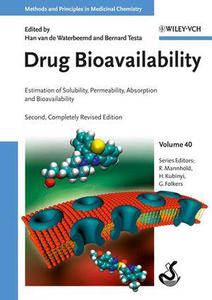
Drug Bioavailability: Estimation of Solubility, Permeability, Absorption and Bioavailability, Volume 40, Second Edition By Raimund Mannhold, Hugo Kubinyi, Gerd Folkers(eds.)
2008 | 632 Pages | ISBN: 3527320512 | PDF | 16 MB
The gold standard for industrial research now completely revised in line with current trends in the field, with all contributions extensively updated or rewritten. In 21 chapters readers can benefit from the key working knowledge of today's leading pharmaceutical companies, including Pfizer, AstraZeneca, and Roche. Drug developers from industry and academia present all the factors governing drug bioavailability, complete with practical examples and real-life data. Part I focuses on in vitro and in vivo measurements of physicochemical properties, such as membrane permeability and ionization. Part II discusses solubility and gastrointestinal absorption, while the third part is devoted to metabolism and excretory mechanisms. The much revised and expanded part IV surveys current in silico approaches to predict drug properties needed to estimate the bioavailability of any new drug candidate. The final part shows how poor bioavailability may be improved by various approaches during the development process. No other publication offers the same level of treatment on this crucial topic in modern drug development.Content: Chapter 1 Introduction: The Why and How of Drug Bioavailability Research (pages 1-6): Dr. Han van de Waterbeemd and Prof. Dr. Bernard TestaChapter 2 Aqueous Solubility in Drug Discovery Chemistry, DMPK, and Biological Assays (pages 7-31): Nicola Colclough, Linette Ruston and Kin TamChapter 3 Gastrointestinal Dissolution and Absorption of Class II Drugs (pages 33-51): Arik S. Dahan and Gordon L. AmidonChapter 4 In Silico Prediction of Solubility (pages 53-68): Andrew M. Davis and Pierre BruneauChapter 5 Physicochemical Approaches to Drug Absorption (pages 69-99): Dr. Han van de WaterbeemdChapter 6 High?Throughput Measurement of Physicochemical Properties (pages 101-132): Barbara P. MasonChapter 7 An Overview of Caco?2 and Alternatives for Prediction of Intestinal Drug Transport and Absorption (pages 133-159): Anna?Lena Ungell and Per ArturssonChapter 8 Use of Animals for the Determination of Absorption and Bioavailability (pages 161-184): Chris LoganChapter 9 In Vivo Permeability Studies in the Gastrointestinal Tract of Humans (pages 185-219): Niclas Petri and Hans LennernasChapter 10 Transporters in the Gastrointestinal Tract (pages 221-276): Pascale Anderle and Carsten U. NielsenChapter 11 Hepatic Transport (pages 277-332): Kazuya Maeda, Hiroshi Suzuki and Yuichi SugiyamaChapter 12 The Importance of Gut Wall Metabolism in Determining Drug Bioavailability (pages 333-357): Christopher KohlChapter 13 Modified Cell Lines (pages 359-372): Guangqing Xiao and Charles L. CrespiChapter 14 Calculated Molecular Properties and Multivariate Statistical Analysis (pages 373-408): Ulf NorinderChapter 15 Computational Absorption Prediction (pages 409-432): Christel A. S. Bergstrom, Markus Haeberlein and Ulf NorinderChapter 16 In Silico Prediction of Human Bioavailability (pages 433-451): David J. Livingstone and Dr. Han van de WaterbeemdChapter 17 Simulations of Absorption, Metabolism, and Bioavailability (pages 453-495): Michael B. Bolger, Robert Fraczkiewicz and Viera LukacovaChapter 18 Toward Understanding P?Glycoprotein Structure-Activity Relationships (pages 497-519): Anna SeeligChapter 19 Application of the Biopharmaceutics Classification System Now and in the Future (pages 521-558): Bertil Abrahamsson and Hans LennernasChapter 20 Prodrugs (pages 559-570): Prof. Dr. Bernard TestaChapter 21 Modern Delivery Strategies: Physiological Considerations for Orally Administered Medications (pages 571-595): Clive G. Wilson and Werner WeitschiesChapter 22 Nanotechnology for Improved Drug Bioavailability (pages 597-611): Marjo Yliperttula and Arto Urtti
E-Books → Dendrimer-Based Drug Delivery Systems From Theory to Practice
Published by: voska89 on 3-08-2022, 23:33 |  0
0
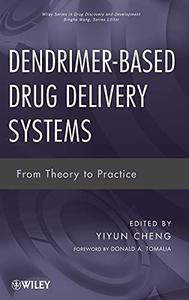
Dendrimer-Based Drug Delivery Systems: From Theory to Practice By Binghe Wang(eds.)
2012 | 533 Pages | ISBN: 0470460059 | PDF | 8 MB
The opportunities and challenges of using dendrimers to improve drug deliveryAmong pharmaceutical and biomedical researchers, the use of dendrimers in drug delivery systems has attracted increasing interest. In particular, researchers have noted that the volume of a dendrimer increases when it has a positive charge. If this property can be applied effectively, dendrimers have enormous potential in drug delivery systems, directly supplying medication to targeted human organs. With contributions from an international team of pioneers and experts in dendrimer research, this book provides a comprehensive overview of the latest research efforts in designing and optimizing dendrimer-based drug delivery systems. The book analyzes key issues, demonstrating the critical connections that link fundamental concepts, design, synthesis, analytical methodology, and biological assessment to the practical use of dendrimers in drug delivery applications. Topics covered include: Dendrimer historySynthesisPhysicochemical propertiesPrinciples of drug deliveryApplications in diverse biomedical fieldsDendrimer-Based Drug Delivery Systems reflects the authors' thorough review and analysis of the current literature as well as their own firsthand experience in the lab. Readers will not only discover the current state of the science, but also gain valuable insights into fruitful directions for future research. References at the end of each chapter serve as a gateway to the growing body of literature in the field, enabling readers to explore each individual topic in greater depth. Pharmaceutical and biomedical researchers will find this book a unique and essential guide to the opportunities, issues, and challenges involved in fully exploiting the potential of dendrimers to improve drug delivery.Content: Chapter 1 Dendrimer Chemistry: Supramolecular Perspectives and Applications (pages 1-54): Charles N. Moorefield, Sujith Perera and George R. NewkomeChapter 2 Physicochemical Properties of Dendrimers and Dendrimer Complexes (pages 55-92): Toyoko ImaeChapter 3 The Use of Dendrimers to Optimize the Physicochemical and Therapeutic Properties of Drugs (pages 93-137): Nicole Stieger, Wilna Liebenberg, Marique E. Aucamp and Melgardt M. De VilliersChapter 4 Biological Properties of Phosphorus Dendrimers (pages 139-155): Anne?Marie Caminade and Jean?Pierre MajoralChapter 5 Dendrimer?Based Prodrugs: Synthesis and Biological Evaluation (pages 157-206): Mohammad Najlah, Zhengyuan Zhou and Antony D'EmanueleChapter 6 Improving the Biocompatibility of Dendrimers in Drug Delivery (pages 207-237): Yiwen Li, Libo Zhao and Yiyun ChengChapter 7 Degradable Dendrimers for Drug Delivery (pages 239-305): Marc Gingras and Myriam RoyChapter 8 Design of Stimuli?Responsive Dendrimers for Biomedical Purposes (pages 307-327): Chie KojimaChapter 9 Dendrimer?Based Gene Delivery Systems: Administration Routes and In Vivo Evaluation (pages 329-354): M. J Santander?Ortega, I. F. Uchegbu and A. G. SchatzleinChapter 10 Triazine Dendrimers for DNA and siRNA Delivery: Progress, Challenges, and Opportunities (pages 355-406): Meredith A. Mintzer, Olivia M. Merkel, Thomas Kissel and Eric E. SimanekChapter 11 Dendrimer?Coated Carbohydrate Residues as Drug Delivery Trojan Horses in Glycoscience (pages 407-438): Yoann M. Chabre and Rene RoyChapter 12 Nuclear Magnetic Resonance Techniques in the Analysis of Pamam Dendrimer?Based Drug Delivery Systems (pages 439-461): Xueyan Feng, Kun Yang, Jingjing Hu, Tongwen Xu and Yiyun ChengChapter 13 Dendrimer?Based Medical Nanodevices for Magnetic Resonance Imaging Applications (pages 463-478): Hongdong Cai, Mingwu Shen and Xiangyang ShiChapter 14 Dendrimer?Related Nanoparticle System for Computed Tomography Imaging (pages 479-500): Chen Peng and Xiangyang Shi
E-Books → Flow Cytometry in Drug Discovery and Development
Published by: voska89 on 2-08-2022, 17:53 |  0
0

Flow Cytometry in Drug Discovery and Development By
2010 | 355 Pages | ISBN: 0470433566 | PDF | 49 MB
This book covers the unique application of flow cytometry in drug discovery and development. The first section includes two introductory chapters, one on flow cytometry and one on biomarkers, as well as a chapter on recent advances in flow cytometry. The second section focuses on the unique challenges and added benefits associated with the use of flow cytometry in the drug development process. The third section contains a single chapter presenting an in depth discussion of validation considerations and regulatory compliance issues associated with drug development.Content: Chapter 1 Introduction to Flow Cytometry (pages 3-21): Elizabeth Raveche, Fatima Abbasi, Yao Yuan, Erica Salerno, Siddha Kasar and Gerald E. MartiChapter 2 Recent Advances in Flow Cytometry: Platforms, Tools, and Challenges for Data Analysis (pages 23-54): Paul J. Smith, Roy Edward and Rachel J. ErringtonChapter 3 Introduction to Biomarkers (pages 55-68): Ole Vesterqvist and Manjula P. ReddyChapter 4 HTS Flow Cytometry, Small?Molecule Discovery, and the NIH Molecular Libraries Initiative (pages 71-97): Larry A. Sklar and Bruce S. EdwardsChapter 5 A Multiparameter Approach to Cell Cycle Analysis as a Standard Tool in Oncology Drug Discovery (pages 99-122): Carmen Raventos?Suarez and Byron H. LongChapter 6 Flow Cytometry in Preclinical Toxicology/Safety Assessment (pages 123-150): David McFarland and Kristi R. HarkinsChapter 7 Use of Flow Cytometry to Study Drug Target Inhibition in Laboratory Animals and in Early?Phase Clinical Trials (pages 151-168): David W. HedleyChapter 8 CD4 T Cell Assessments in Evaluation of HIV Therapeutics (pages 169-187): Thomas N. Denny, Raul Louzao, John Wong and Brooke WalkerChapter 9 Monitoring the Cellular Components of the Immune System During Clinical Trials: A Translational Medicine Approach (pages 189-203): Virginia Litwin and James AndahazyChapter 10 Immunogenicity Testing Using Flow Cytometry (pages 205-223): Denise M. O'Hara and Valerie TheobaldChapter 11 Pharmacokinetics by Flow Cytometry: Recommendations for Development and Validation of Flow Cytometric Method for Pharmacokinetic Studies (pages 225-240): Yuanxin Xu and Susan M. RichardsChapter 12 Regulatory Compliance and Method Validation (pages 243-266): Carla G. Hill, Dianna Y. Wu, John Ferbas, Virginia Litwin and Manjula P. ReddyChapter 13 Instrument Validation for Regulated Studies (pages 267-277): John Ferbas and Michelle J. SchroederChapter 14 Probability State Modeling: A New Paradigm for Cytometric Analysis (pages 281-302): C. Bruce BagwellChapter 15 Phospho Flow Cytometry: Single?Cell Signaling Networks in Next?Generation Drug Discovery and Patient Stratification (pages 303-334): Peter O. Krutzik, Sean C. Bendall, Matthew B. Hale, Jonathan M. Irish and Garry P. Nolan
E-Books → G Protein-Coupled Receptors as Drug Targets Analysis of Activation and Constitutive Activity, Volume 24
Published by: voska89 on 30-07-2022, 18:45 |  0
0
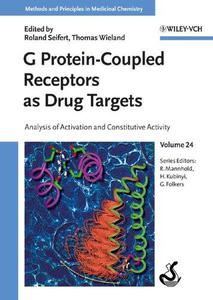
G Protein-Coupled Receptors as Drug Targets: Analysis of Activation and Constitutive Activity, Volume 24 By Raimund Mannhold, Hugo Kubinyi, Gerd Folkers(eds.)
2005 | 295 Pages | ISBN: 3527308199 | PDF | 3 MB
With its particular emphasis on the constitutive activity of G-protein-coupled receptors (GPCRs)s, this book comprehensively discusses an important biological process that has not yet been covered in such depth in any other existing books on GPCRs. The international team of highly distinguished authors addresses in detail current models and concepts, to introduce medicinal chemists, physiologists, pharmacologists, and medical researchers into the advances in the understanding of GPCR activation and constitutive activity. In addition, the book provides an overview on methods of investigating constitutive GPCR activity. The text is well illustrated by selected experimental data and schemes._The chaptes are all cross-referenced with each other and cover general mechnisms, methodological approaches and cover selected important GPCR sysstems, the consequences for drug action, including, side effects, and rational drug design for GPCR targets. A highly recommended reference for researchers in academia and industry. authors addresses in detail current models and concepts, so as to introduce pharmaceutical chemists, physiologists and medical researchers to the advances in the understanding of GPCR activation and constitutive activity, and provides an overview of the methods of investigating GPCR activity. The text is backed by abundant case studies and methodological advice for analyzing GPCRs, covering selected pharmacologically relevant GPCR systems, the consequences for drug action, including unwanted side effects, and rational drug design for GPCR targets. A highly practical reference for researchers in academia and industry.Content: Chapter 1 Historical Background and Introduction (pages 1-10): Richard A. Bond and Robert J. LefkowitzChapter 2 The Nature of Constitutive Activity and Inverse Agonism (pages 11-26): Terry KenakinChapter 3 Molecular Mechanisms of GPCR Activation (pages 27-42): Soren G. F. Rasmussen and Ulrik GetherChapter 4 Molecular and Cellular Determinants of GPCR Splice Variant Constitutive Activity (pages 43-54): Joel Bockaert, Sylvie Claeysen, Lara Joubert, Laurent Fagni and Aline DumuisChapter 5 Naturally Occurring Constitutively Active Receptors: Physiological and Pharmacological Implications (pages 55-61): Alan S. Kopin and Martin BeinbornChapter 6 The Impact of G Proteins on Constitutive GPCR Activity (pages 63-70): Graeme MilliganChapter 7 (Patho)physiological and Therapeutic Relevance of Constitutive Activity and Inverse Agonism at G Protein?Coupled Receptors (pages 71-80): Lutz HeinChapter 8 Methodological Approaches (pages 81-120): Prof. Thomas Wieland and Prof. Roland SeifertChapter 9 Constitutive Activity of ??Adrenoceptors: Analysis in Membrane Systems (pages 121-140): Prof. Roland SeifertChapter 10 Constitutive Activity of ??Adrenoceptors: Analysis by Physiological Methods (pages 141-157): Ursula Ravens, Clive J. Lewis and Sian E. HardingChapter 11 Constitutive Activity at the ?1?Adrenoceptors: Past and Future Implications (pages 159-176): Susanna Cotecchia, Francesca Fanelli, Alexander Scheer and Tommaso CostaChapter 12 Constitutive Activity of Muscarinic Acetylcholine Receptors: Implications for Receptor Activation and Physiological Relevance (pages 177-193): Ethan S. Burstein and Tracy A. SpaldingChapter 13 Constitutively Active Histamine Receptors (pages 195-222): Remko A. Bakker and Rob LeursChapter 14 Constitutively Active Serotonin Receptors (pages 223-241): Katharine Herrick?DavisChapter 15 Virally Encoded Constitutively Active Chemokine Receptors (pages 243-264): Barbara Moepps and Peter Gierschik
E-Books → Biomedical Translational Research Drug Design and Discovery
Published by: voska89 on 30-07-2022, 18:23 |  0
0
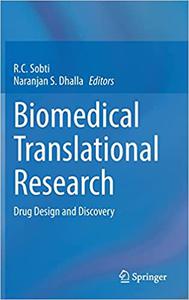
Biomedical Translational Research: Drug Design and Discovery
English | 2022 | ISBN: 9811692319 | 490 Pages | PDF EPUB (True) | 55 MB
This book, which is the third volume of Biomedical translational research, focuses on the fundamental role of biomedical research in developing new medicinal products. It emphasizes the importance of understanding biological and pathophysiological mechanisms underlying the disease to discover and develop new biological agents. The book uniquely explores the genomic computational integrative approach for drug repositioning. Further, it discusses the health benefits of nutraceuticals and their application in human diseases. Further, the book comprehensively reviews different computational approaches that employ GWAS data to guide drug repositioning. Finally, it summarizes the major challenges in drug development and the strategies for the rational design of the next generation more effective but less toxic therapeutic agents.
E-Books → Extractables and Leachables Characterization of Drug Products, Packaging, Manufacturing and Delivery Systems & Medical Devices
Published by: voska89 on 29-07-2022, 23:57 |  0
0
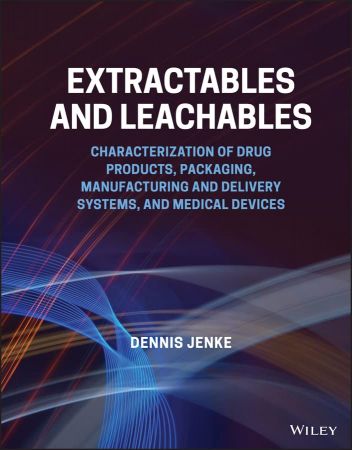
English | 2022 | ISBN: 1119605075 | 457 pages | True EPUB, PDF | 32.51 MB
EXTRACTABLES AND LEACHABLES Learn to address the safety aspects of packaged drug products and medical devices
Pharmaceutical drug products and medical devices are expected to be effective and safe to use. This includes minimizing patient, user or product exposure to impurities leached from these items when the drug product is administered or when the medical device is used. Clearly, patient or user exposure to leachables must not adversely impact their health and safety. Furthermore, these impurities must not adversely affect key quality attributes of the drug product or medical device, including its manufacturability, stability, efficacy, appearance, shelf-life and conformance to standards.
E-Books → Inflammation and Allergy Drug Design
Published by: voska89 on 28-07-2022, 23:26 |  0
0
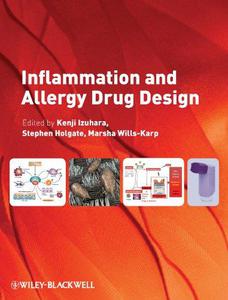
Inflammation and Allergy Drug Design By
2011 | 326 Pages | ISBN: 1444330144 | PDF | 10 MB
Our knowledge and understanding of allergic diseases of the respiratory tract has improved to a point where new therapies are being developed for patient benefit.Inflammation and Allergy Drug Design explains the biologic science that underpins the pathophysiology of asthma and related disorders, as well as their mechanisms. This authoritative guide consists of 25 chapters, each detailing the cutting-edge developments in a particular field. It is divided into three parts, covering cytokines, chemokines, grow factors and mediators. This book allows immunologists, allergologists and researchers in the pharmaceutical industry to learn and appreciate the target biology in drug development. It also provides medical and pharmaceutical postgraduatestudents and clinicians with a basic understanding of allergic diseases in the respiratory tract.Content: Chapter 1 Novel Anti?Inflammatory Drugs Based on Targeting Lung Dendritic Cells and Airway Epithelial Cells (pages 1-14): Bart N. Lambrecht, Maud Plantinga, Monique Willart and Hamida HammadChapter 2 Role of Th2 Cells in the Allergic Diathesis (pages 15-25): Marsha Wills?karpChapter 3 Importance of Th17? and Th1?Associated Responses for the Development of Asthma (pages 27-38): Tomohiro Yoshimoto, Hiroko Tsutsui and Kenji NakanishiChapter 4 Regulatory T Cells (pages 39-57): Chris Corrigan and Kimuli RyannaChapter 5 A Role for Natural Killer T?Cell Subsets in the Pathogenesis of Various Allergic Disorders (pages 59-66): Hiroshi Watarai, Michishige Harada, Mayumi Tamari and Masaru TaniguchiChapter 6 Regulatory Roles of B Cells in Allergy and Inflammation (pages 67-77): Kiyoshi Takatsu, Masashi Ikutani and Yoshinori NagaiChapter 7 Mast Cells (pages 79-105): Mindy Tsai and Stephen J. GalliChapter 8 Eosinophils (pages 107-121): Nancy A. Lee, Mark V. Dahl, Elizabeth A. Jacobsen and Sergei I. OchkurChapter 9 Basophils in Inflammation and Allergy Drug Design (pages 123-137): Donald MacGlashanChapter 10 Epithelial Cells (pages 139-148): Tillie?Louise Hackett, Stephanie Warner, Dorota Stefanowicz and Darryl KnightChapter 11 Fibroblasts (pages 149-162): Alastair G. Stewart, Lilian Soon and Michael SchuligaChapter 12 Airway Smooth Muscle Cells (pages 163-171): Andrew J. Halayko and Pawan SharmaChapter 13 Interleukin 4, Interleukin 13, and Interleukin 9 (pages 173-185): Kenji Izuhara, Shoichiro Ohta, Hiroshi Shiraishi and Shoichi SuzukiChapter 14 Interleukin 3, Interleukin 5, and Granulocyte-Macrophage Colony?Stimulating Factor (pages 187-196): Alba Llop?Guevara, Josip Marcinko, Ramzi Fattouh and Manel JordanaChapter 15 Interleukin 15, Interleukin 17, and Interleukin 25 (pages 197-204): Hiroshi Nakajima and Itsuo IwamotoChapter 16 Thymic Stromal Lymphopoietin (pages 205-214): Kazuhiko Arima and Yong?Jun LiuChapter 17 Interleukin 10 (pages 215-224): Whitney W. Stevens, Larry Borish and John W. SteinkeChapter 18 Tumor Necrosis Factor Alpha (pages 225-235): Christopher Brightling, Latifa Chachi, Dhan Desai and Yassine AmraniChapter 19 Profibrotic and Angiogenic Factors in Asthma (pages 237-252): Neville Berkman and Francesca Levi?SchafferChapter 20 Chemokines (pages 253-261): Luis M. Teran and Juan R. VelazquezChapter 21 Epithelial Growth Factors (pages 263-270): Yasuhiro Gon and Shu HashimotoChapter 22 Prostanoids (pages 271-283): Sarah A. Maher, Deborah L. Clarke and Maria G. BelvisiChapter 23 Leukotrienes (pages 285-295): Katsuhide Okunishi and Marc Peters?GoldenChapter 24 Proteases in Allergy (pages 297-305): Keisuke Oboki and Hirohisa SaitoChapter 25 Toll?Like Receptors (pages 307-316): Jessica L. Allen, Aurelien Trompette and Christopher L. Karp
E-Books → Human Drug Metabolism An Introduction, Second Edition
Published by: voska89 on 28-07-2022, 23:18 |  0
0
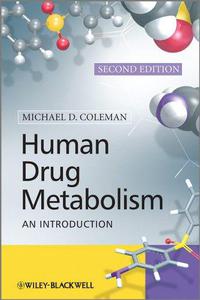
Human Drug Metabolism: An Introduction, Second Edition By Michael D. Coleman(auth.)
2010 | 350 Pages | ISBN: 0470742178 | PDF | 4 MB
Human Drug Metabolism, An Introduction, Second Edition provides an accessible introduction to the subject and will be particularly invaluable to those who already have some understanding of the life sciences. Completely revised and updated throughout, the new edition focuses only on essential chemical detail and includes patient case histories to illustrate the clinical consequences of changes in drug metabolism and its impact on patient welfare. After underlining the relationship between efficacy, toxicity and drug concentration, the book then considers how metabolizing systems operate and how they impact upon drug concentration, both under drug pressure and during inhibition. Factors affecting drug metabolism, such as genetic polymorphisms, age and diet are discussed and how metabolism can lead to toxicity is explained. The book concludes with the role of drug metabolism in the commercial development of therapeutic agents as well as the pharmacology of some illicit drugs.Content: Chapter 1 Introduction (pages 1-11): Chapter 2 Drug Biotransformational Systems - Origins and Aims (pages 13-22): Chapter 3 How Oxidative Systems Metabolize Substrates (pages 23-64): Chapter 4 Induction of Cytochrome P450 Systems (pages 65-92): Chapter 5 Cytochrome P450 Inhibition (pages 93-123): Chapter 6 Conjugation and Transport Processes (pages 125-157): Chapter 7 Factors Affecting Drug Metabolism (pages 159-212): Chapter 8 Role of Metabolism in Drug Toxicity (pages 213-267):
E-Books → Baiocchi M Cancer Drug Resistance Methods and Protocols 2022
Published by: Emperor2011 on 27-07-2022, 05:11 |  0
0

Baiocchi M Cancer Drug Resistance Methods and Protocols 2022 | 20.87 MB
English | 247 Pages
Title: Qunol Ultra CoQ10 100mg, 3x Better Absorption, Patented Water and Fat Soluble Natural Supplement Form of Coenzyme Q10, Antioxidant for Heart Health, 120 Count Softgels
Author: N/A
Year: 2008
E-Books → Pseudo-Peptides in Drug Development
Published by: voska89 on 24-07-2022, 22:55 |  0
0

Pseudo-Peptides in Drug Development By
2004 | 252 Pages | ISBN: 3527306331 | PDF | 4 MB
Peptides are among the most versatile bioactive molecules, yet the do not make good drugs, because they are quickly degraded or modified in the body. To overcome this problem, stable and at the same time biologically active pseudo-peptides have been developed. These novel compounds open up new perspectives in drug design by providing an entire range of highly specific and non-toxic pharmaceuticals. This is the first work devoted to the topic and draws together knowledge gained on different types of peptidomimetics and other pseudo-peptides with drug properties. As such, it includes peptoids, beta-peptides, polyamide DNA binders as well as peptide nucleic acids. The expert authors and editor discuss chemical properties and stability, biological activity and reactivity, as well as practical aspects of synthesis, making this a prime resource for drug developers and bioorganic chemists working with these compounds.Content: Chapter 1 Versatile Oligo(N?Substituted) Glycines: The Many Roles of Peptoids in Drug Discovery (pages 1-31): James A. Patch, Kent Kirshenbaum, Shannon L. Seurynck, Ronald N. Zuckermann and Annelise E. BarronChapter 2 ??Peptides, ??Peptides and Isosteric Backbones: New Scaffolds with Controlled Shapes for Mimicking Protein Secondary Structure Elements (pages 33-120): Gilles GuichardChapter 3 Regulation of Gene Expression with Pyrrole?Imidazole Polyamides (pages 121-152): Peter B. Dervan, Eric J. Fechter, Benjamin S. Edelson and Joel M. GottesfeldChapter 4 Peptide Nucleic Acid (PNA): A Pseudo?peptide with DNA?like Properties (pages 153-191): Peter E. Nielsen, Uffe Koppelhus and Frederik BeckChapter 5 ??Helical Peptide Nucleic Acids (?PNAs) (pages 193-221): Philip Garner, Subhakar Dey and Yumei HuangChapter 6 DNA and RNA?cleaving Pseudo?peptides (pages 223-240): Alessandro Scarso and Paolo Scrimin



